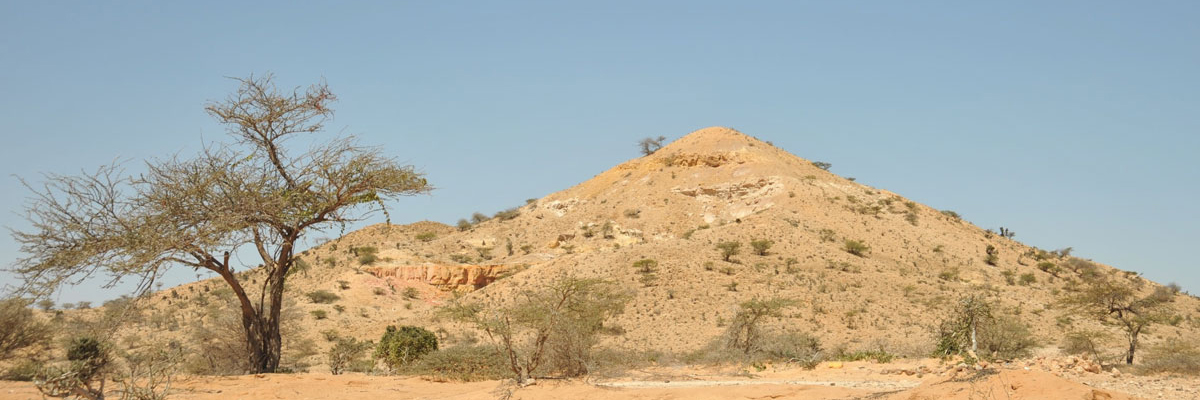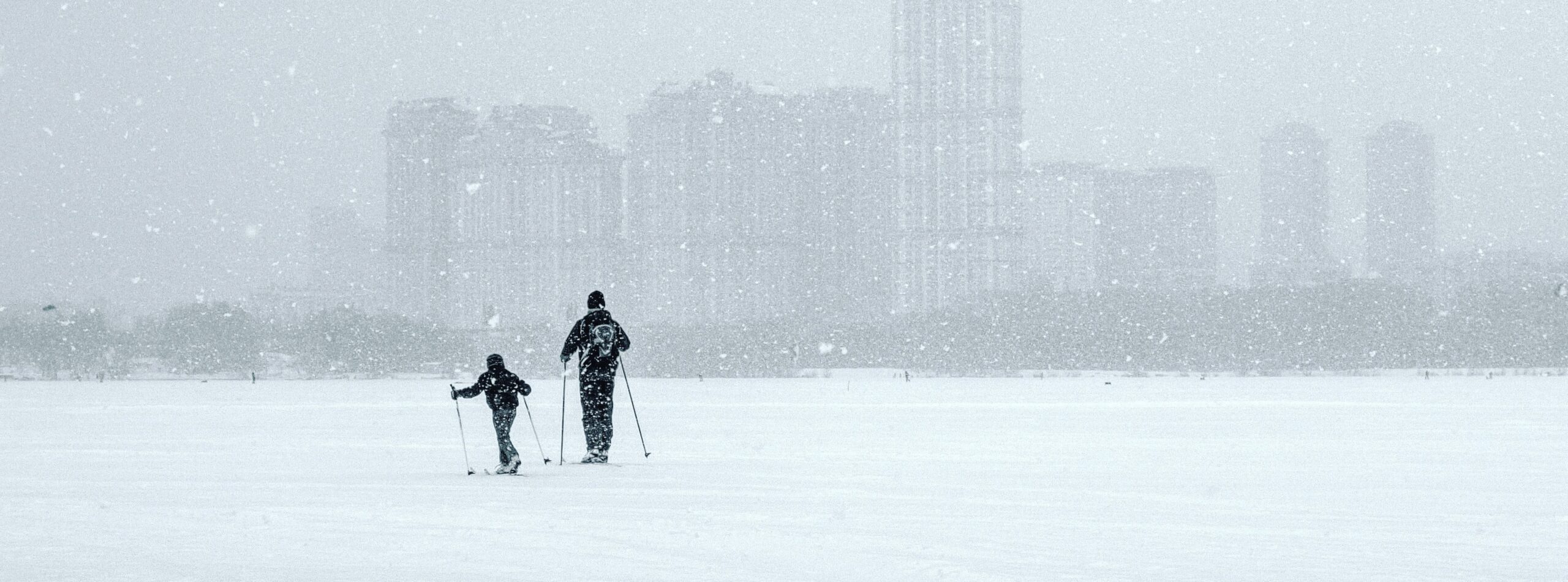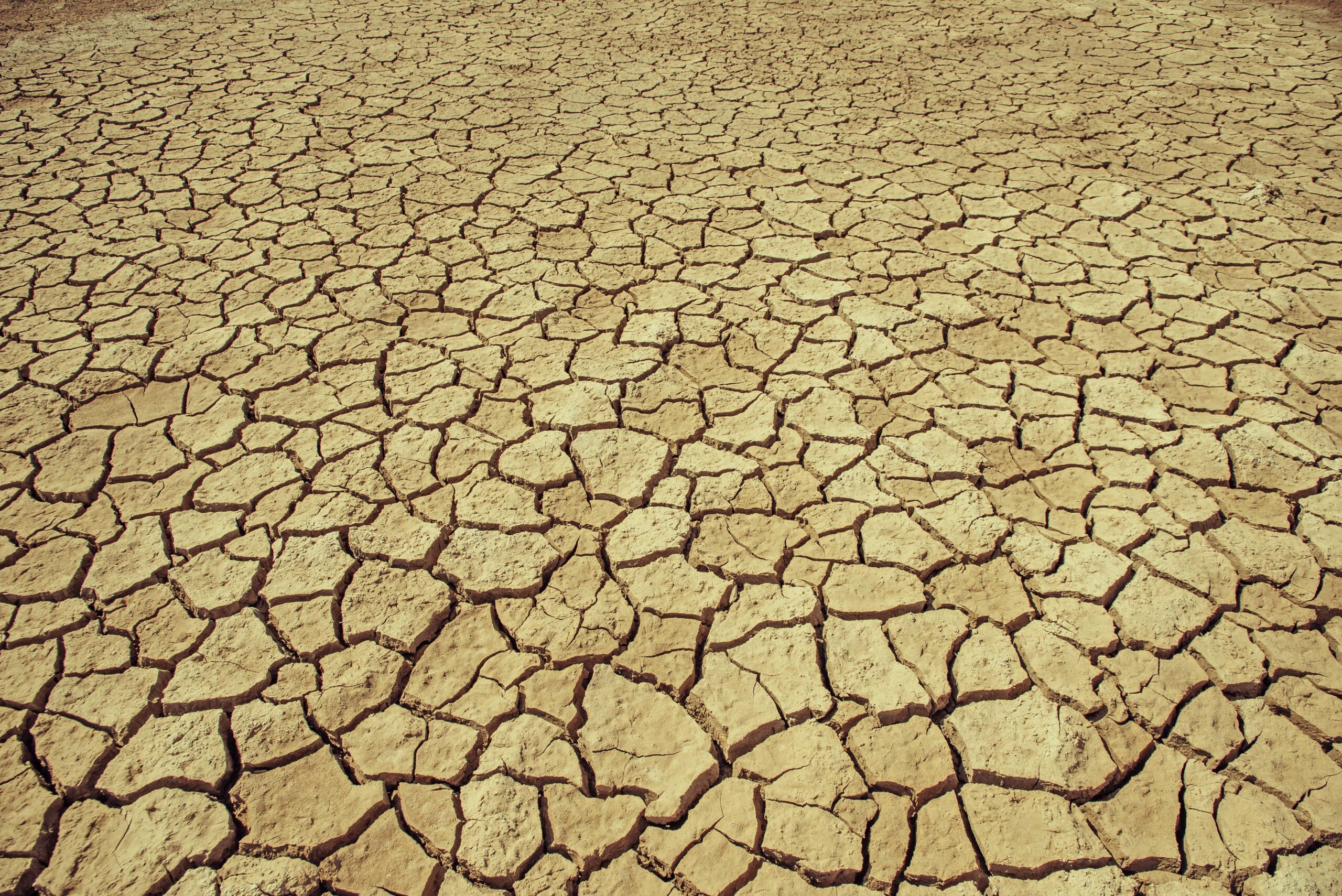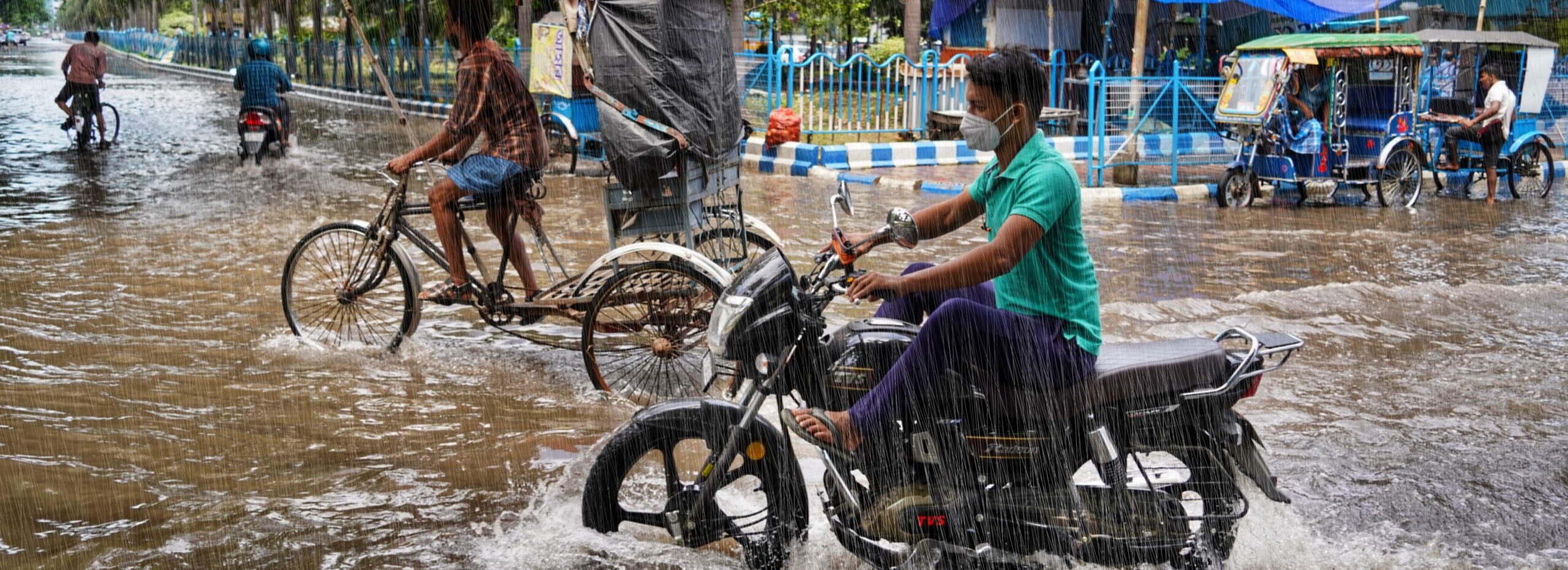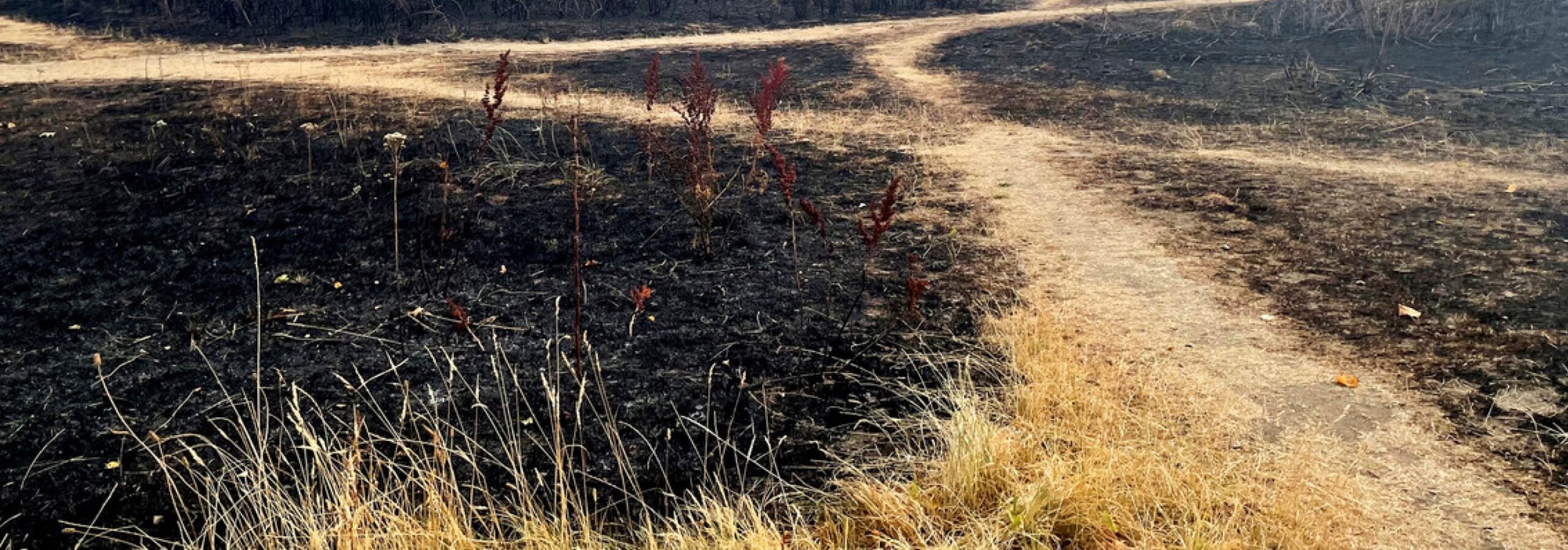As of March 2017, over 40 percent of the Somali population was in need of emergency food assistance (UNOCHA). The deteriorating situation partly resulted from successive dry spells in 2016, leading to increased risk of mortality and severe long-term impacts on livelihoods and assets (IFRC). FEWSNET reported that if the upcoming April to June “Gu” season rainfall failed, IPC-Level 5 Catastrophe (i.e. at least one in five households face a complete lack of food and/or other basic needs and starvation, death, and destitution are evident) may be reached (FEWS net). The main rivers along which many people base their livelihoods, the Shabelle, Dawa, and Juba have reached very low levels or have run dry (FAOSWALIM). As almost always, food insecurity does not result from a meteorological drought alone. In Somalia the protracted conflict, lack of access to markets, and underlying structural factors play important roles in determining the risk (Maxwell and Fitzpatrick 2012).
Key findings
- Somalia is currently facing a quickly deteriorating food security situation, triggered by depressed rainfall in the context of high exposure and vulnerability of many people in the country, mainly related to decades of conflict and political upheaval. This analysis-t looks at the potential role of climate change, as well as the role of the recent La Niña, in the occurrence of the drought.
- Somalia has two rainy seasons: when the interropical convergence zone passes north in spring and when it passes south again in autumn. In central and southern Somalia this is mainly in April-May and October-November, sometimes extended into December. Further north in the rains start earlier, in March and August.
- Geographically, the northwestern part of Somalia, also known as Somaliland, has a somewhat different climate from the rest of the country. We therefore carried out two separate analyses, one for this northwestern region, hereafter referred to as Somaliland, and one for the rest of the country, hereafter referred to as Somalia (referring to Somalia except the northwestern part).
- In this analysis we only consider meteorological drought, i.e., lack of rain, not the separate effect of temperature. In 2016 the spring rains were about 20 percent below normal in Somalia, but a bit above normal in Somaliland. The autumn rains failed in both areas, with about half the normal amount of rain in the second half of the year on average, much less in some regions. In Somaliland this was a very rare, once-a-century, event. In the rest of Somalia it was not as rare (1-in-10 to 30 years).
- First we looked for trends in the historical observations of rainfall. The CenTrends dataset goes back to 1900 and is based on an extensive collection of station data in eastern Africa. Overall, we found no trend in the observations but due to the high variability of rain in this area this still allows fairly large underlying trends.
- For this rapid study we used three models for which the data were readily available to study the climate change signal. The first is the SST-forced HadGEM3-A 15-member ensemble at N219 resolution (~60km). The second model is the EC-Earth 2.3 16-member ensemble at T159 (~150km) using the CMIP5 historical/RCP8.5 protocol that was used to construct the KNMI’14 climate change scenarios. The third is the large ensemble distributed computing framework weather@home, which employs a regional climate model HadRM3P with a resolution of 50km inside the global SST-forced HadAM3P model.
- Two of the models show no trend, one a small increase in the likelihood of dry extremes. Taking all the evidence together we therefore conclude that the effect of climate change on dry extremes in Somalia and Somaliland in the autumn (Deyr) rains is small compared to natural variability. We cannot show that climate change influenced the probability of drought.
- The strong La Niña that was active at the time increased the probability of a dry season and explains about one third of the precipitation deficit. This was not forecast well by current seasonal forecast models.
Introduction
In this analysis we investigate the roles of climate change and El Niño in the observed very low precipitation in Somalia in 2016 using both climate models and observational data. The methods applied here are similar to those used in the recently published study that analyzed the role of climate change in the SE Brazil drought (Otto et al, 2015), and in fact uses the same data and methods as ongoing assessments of the droughts in Kenya and Ethiopia (Uhe et al, in prep; Philip et al, in prep).
Note that in this analysis we consider only meteorological drought, i.e., lack of rain, not the separate effect of temperature. In this region average temperatures have been rising roughly at the same rate as the global mean temperature (IPCC, 2013). However, there are no recent public temperature observation in Somalia or neighboring countries to confirm this, and reanalysis disagree on the pattern of warming. Furthermore, in order to assess the impact of higher temperatures on the current conditions, we would need to assess how higher temperatures affect runoff, evapotranspiration and water scarcity. This depends on factors such as the soil reaction to more intense rain, properties of plant types, irrigation usage, and is beyond the scope of this article.
East African rainfall studies indicate that coherent projections of precipitation across the region are possible. Souverijns et al. (2016) analyse drivers of future variability in East African precipitation using 15 historical and future members of CORDEX to obtain typical circulation types. Under a high-emissions scenario, precipitation changes related to variation in occurrence of these CTs attributes for 23 percent of the East African synoptic component by 2100. The remaining 77 percent is due to changes in moisture content/influx or local/mesoscale feedbacks and affects precipitation increases close to the equator and the Somali region. Lott et al.’s (2013) study of the 2011 East African drought concluded that the failed 2011 long rains were more probable under anthropogenic climate change. Funk et al.’s (2015) examination of the 2014 boreal spring East African drought concluded that the drought was a result of both anthropogenic and residual natural variability contributions, and that non-ENSO forcing led to the 2012 drought although ENSO was a key driver in earlier droughts. In contrast, Marthews et al (2015) found no anthropogenic influence on the likelihood of low rainfall in long rains in the Greater Horn of Africa in 2014, where some of the areas currently in drought were affected as well.
Event definition
Somalia (Figure 1) has two rainy seasons: when the intertropical convergence zone passes north in spring and when it passes south again in autumn. In central Somalia this is mainly in April-May (the “Gu” season) and October-November (the “Deyr” season), although it can sometimes extend into December. Further north the rains start earlier, the Gu season starts in March and the Deyr season in August. Usually the periods in between are not completely dry. We use four-month seasons that encompass the peak of the rains both in the north and the south: March–June and September–December.
Geographically, the northwestern part of Somalia, also known as Somaliland, has a somewhat different climate from the rest of the country. We therefore carried out two separate analyses, one for this northwestern region, hereafter referred to as Somaliland, and one for the rest of the country, hereafter referred to as Somalia (but actually referring to Somalia except the northwestern part). These two analysis regions are indicated on the map of Figure 1.

In 2016 the Gu (spring) rains were about 20 percent below normal in southern and central Somalia, but a bit above normal in the north. The Deyr (autumn) rains failed in both analysis areas, with about half the normal amount of rain in the second half of the year (Figure 2) averaged over these areas. Locally the deficits were even higher, with large parts of Somalia receiving less than 40 percent of the normal rain, some areas even less than 20 percent (Figure 3a).




For this analysis we therefore define the main drought event as the September–December 2016 averaged rainfall, averaged spatially over northwest Somalia (Somaliland) and the rest of the country. We also consider the 2016 annual mean rainfall in Central Somalia (defined to be 2º-5ºN, 44º-47ºE), the region where both rains failed in 2016 (Fig 3b).
Observed trends
First we looked at historical observations of precipitation. The CenTrends dataset goes back to 1900 and is based on an extensive collection of station data in eastern Africa, a region that typically has sparse data coverage. It contains more station data than other analyses in this region, with about 20 stations from 1920 to 2000, four stations in 1900-1920 (Funk et al, 2015). For the period after 2000, satellite data is used.
We fitted a Generalised Pareto Distribution to the lowest 40 percent of the data over the period 1900-2014, which is allowed to scale with the smoothed global mean surface temperature (GMST) as an indicator for the effects of global warming. The fit routine demands that the probability of negative rain is zero.
The resulting fits are shown in Figure 4. They indicate that there is no detectable trend in the observations over the large natural variability. Depending on the details of the fitting procedure, one gets a slight but non-significant positive or negative trend in both areas. The uncertainties in the observed trends are very large and easily encompass zero (no trend) as they range from roughly a factor ten more probability of dry extremes to a factor ten less. Note that this uncertainty range does not yet include systematic uncertainties due to changes in the observing system, but only results from natural variability of the climate.


The same holds for annual precipitation in Central Somalia: there is no significant trend within the large uncertainty (again of the order of plus or minus a factor 10 in probability) due to natural variability.
Observed return periods
In Somalia we find a return period of about 15 years (95% CI: 10–30 yrs), so not an extremely rare event. In Somaliland the return period is roughly 100 years (95% CI 50-700 yrs), so it was an extreme drought there (Figure 5). (As the best estimate for the trend is zero, the return periods for the events were estimated with a time-invariant GPD fit to the lowest 40 percent).


El Niño
Precipitation in Somaliland and especially Somalia is on average higher during El Niño and lower during La Niña. As a measure of the strength of La Niña we use a detrended Niño3.4 index, which is the same area average as the normal Niño3.4 index (5ºS-5ºN, 120º-170ºW) but with the average SST over 30ºS-30ºN subtracted. The trends in these two series are very similar, so they cancel in the difference (H. Hendon, pers. comm.). The resulting series agrees much better with non-temperature ENSO indices such as the Southern Oscillation Index (SOI) or projections on precipitation patterns (Van Oldenborgh et al, in prep).
A linear correlation of this index with the logarithm of precipitation gives a correlation coefficient r=0.4±0.17 (95% CI) for Somalia. There was a strong La Niña event at the time of the drought with a detrended Niño3.4 index of -1.0 K averaged over September-December. This La Niña increased the drought risks considerably. Without La Niña the precipitation would have been about two-thirds of normal, whereas it was only half of normal this year, so it explains a third of the deficit. In a tercile description, La Niña increased the probability of rainfall in the lower tercile from 33 percent to 50 percent. In Somaliland the overall effect of La Niña was weaker, r=0.30±0.20 (95% CI). However, the impact of La Niña on the lower tercile is similar to in Somalia, a 50 percent increase in chance of below-normal rainfall, as the low tail of the precipitation distribution is influenced more by ENSO than the high tail.
The EUROSIP multi-model seasonal forecast from 1 September 2016 (available 15 September) shows some indication of a higher probability of drought in western Kenya and southern Ethiopia, but not in Somalia or Somaliland (Figure 6), in spite of a good La Niña forecast. It is unknown whether a spatial bias correction would have yielded more useful forecasts in view of the observed teleconnections.

Modelled trends
For this rapid attribution we used three models for which the data were readily available to study the climate change signal. The first is the SST-forced HadGEM3-A 15-member ensemble at N219 resolution (~60km) that was created for the EUCLEIA project for 1960-2015. As the 2016 data are not yet available we used the trend in the historical simulations as a proxy for the climate change signal. This model has, within uncertainties, the same variability relative to the mean as the observations so that we can use it with a simple multiplicative bias correction (0.55 for Somalia, 0.72 for Somaliland, the model is too wet). The same GPD fit as to the observations gives a non-significant trend towards fewer dry extremes, both for Somalia and for Somaliland. The historicalNat ensemble, which includes the effects of natural forcings (solar and volcanoes), observed variability in SST and model drift has no significant trends. However, there is a slight non-significant trend towards more rain in that ensemble as well. For the final result from HadGEM3-A we take the difference between the historical and historicalNat trends (for Risk Ratios this implies taking the ratio of the historical and historicalNat results).
The annual mean precipitation in Central Somalia has a strong increase in dry extremes in the historical HadGEM3-A ensemble. However, the historicalNat ensemble has an even stronger trend, so the difference between the two, which represents the anthropogenic influence, is again compatible with no influence.
The second model is the fully coupled EC-Earth 2.3 16-member ensemble at T159 (~150km) using the CMIP5 historical/RCP8.5 protocol that was used to construct the KNMI’14 climate change scenarios. This model also represents dry extremes in the region realistically except for a scaling factor (0.44 for Somalia, 0.49 for Somaliland, the model is also too wet). In both regions it simulates no change in probability of dry extremes over the period 1861-2016 either. The annual mean in Central Somalia also shows no trend.
The KNMI Climate Change Atlas shows for the mean CMIP5 precipitation on average a slight wetting trend, especially in the north, but with an uncertainty that easily encompasses no change. We did not yet study dry extremes, only the trend in the mean, in the full CMIP5 ensemble as these would require bias corrections for each model separately. This supporting result is therefore not included in the synthesis.
The third model is the regional climate model HadRM3P at 50km resolution over Africa, nested in the global atmosphere–only model HadAM3P, making use of the distributed computing framework of weather@home (Massey et al. 2015). With this model, approximately 3500 simulations are run for three scenarios: (1) the actual climate of 2016 using current greenhouse gas (GHG) and aerosol concentrations and observed SSTs and sea-ice extent from the OSTIA dataset (Donlon et al. 2012), (2) simulations of the year 2016 as it might have been without anthropogenic climate change using (natural) preindustrial levels of GHGs, multiple anthropogenic warming patterns subtracted from the OSTIA SSTs (Schaller et al. 2016) and the maximum observed sea-ice extent in the OSTIA dataset, and (3) a reference dataset of simulations from 1986-2015 under observed forcings (climatology).
In this model anthropogenic climate change does increase the likelihood of dry events to occur, in both analysed regions. What is a 1-in-10 year event in the current climate of 2016 in the stippled region would have been a 1-in-25 year event in the natural simulations of 2016. A 1-in-100 year event in Somaliland under 2016 conditions would have been a 1-in-189 year event in the natural 2016 simulations. In contrast to the observations the observed SSTs do not change the likelihood of low rainfall in this model. This highlights that the model potentially does not simulate the rainfall response to large scale variability in the region well, hence results need to be interpreted with caution.
Synthesis
Our results for Somalia and Somaliland are summarized in Figures 7a and 7b. The length of the horizontal bars denotes the 95% confidence interval from natural variability, with the black line indicating the best fit value. Apart from the weather@home analysis neither the observational analysis nor the model trend analysis show a significant trend in rainfall due to climate change: the bars include zero change (RR=1). The central value for the observed trend depends strongly on the details of the fitting procedure, the uncertainty band is much more robust. The Weather@Home model shows an increased probability of dry extremes.
Taking a weighted average of these results (with the weights being the inverse uncertainty squared) gives a small increase as the best estimate for the main region of Somalia and close to no trend for Somaliland. However, the small increase comes from the models alone and cannot be seen in the observations. It should also be noted that the bars only include the uncertainty due to natural variability, not due to changes in the observing system and model uncertainties. The models have multiple ensemble members, reducing the effect of natural variability, but of course have an unknown model uncertainty. This becomes particularly apparent for the very large ensemble of weather@home simulations that only have a small sampling uncertainty. The bars from the different models are non-overlapping (formally, χ²/dof > 1), pointing to sizeable model spread on top of the uncertainty due to natural variability. We included this to first order by increasing the uncertainties so that χ²/dof = 1. This gives larger uncertainties to the average that encompass all model results.
Overall we have very little confidence in the best guess estimate of the results. We however do have confidence that we can exclude changes outside the combined confidence interval shown in Figure 7a and b for the two regions. In both regions we cannot show that climate change increased the probability of drought. We can exclude increases in probability larger than about a factor five, and decreases in probability smaller than a factor 0.7.



The same holds for annual mean precipitation in Central Somalia (Fig. 7c). Due to the region being smaller, the natural variability is even larger than in the larger regions considered for the Deyr (autumn) rains, so the uncertainties from the observational analysis are also larger still. However, all analyses except Weather@Home agree on no discernible trend in annual mean precipitation in this area. We do not have the results from Weather@Home, but these could also easily deviate from the other two models.
Vulnerability and exposure
The current food insecurity in Somalia results from an occurrence of a meteorological drought in a context of very high exposure and vulnerability, originating primarily from decades of conflict which has forced many Somalis to flee their homes time and again, eroding their asset bases (e.g. Love 2009, Masih et al. 2014) A failure of both rainy seasons occurred in 2010-11 in the larger region of the Horn of Africa, causing widespread crop failures in 2011 and led to famine in Somalia (Lott et al. 2013, Coghlan et al. 2014, Nicholson 2014). Factors that led to the 2011 famine included failed rains, insecurity, rising global food prices, and longstanding structural issues (Maxwell and Fitzpatrick 2012, Majid and McDowell 2012). Today these factors exist at various magnitudes in different locations across Somalia, resulting in some areas that are more likely to experience food insecurity than others.
Conclusions
Somalia is facing severe impacts of the recent period of depressed rainfall, mainly given the high vulnerability of many people after decades of conflict. We have assessed the potential role of climate change and the recent La Niña in the meteorological drought. We found that the trend in observed rainfall for September-December in both Somalia and Somaliland is essentially zero. However, the probability of a season at least as dry as the one observed in 2016 occurring would have to change by a factor of 10 or more in order for a trend to become distinguishable over the high natural variability present in the observations in these regions. If the true probability has changed by a smaller factor we cannot determine it from observations. We examined three climate models that have a reasonable representation of the variability of precipitation in this area relative to the mean (which is too wet for HadGEM and EC-Earth and too dry for weather@home). Two of these models also simulate almost no trend in dry extremes: zero change is well within the uncertainty due to natural variability. An exception is the weather@home model which does show a significant drying trend, showing the role of model uncertainty. The result for the mean of the full CMIP5 ensemble, which shows a change from only a slightly drying trend to a wetting trend, has uncertainty margins that encompass zero. Taking all the evidence together, we therefore conclude that the effect of climate change on dry extremes in Somalia and Somaliland in the autumn (Deyr) rains is small: any change of probability that is concealed by natural variability is smaller than a factor of five increase and larger than a factor 0.7 decrease.
The strong La Niña that was active at the time increased the probability of a dry season and explains about one third of the precipitation deficit. This teleconnection was not caught by the EUROSIP multi-model seasonal forecasts.
We also considered annual mean precipitation in the region in central Somalia where this had a large deficit, and found essentially the same result: no trend in observations nor models.
References
Coghlan, C., Muzammil, M., Ingram, J., Vervoort, J., Otto, F.E.L. and James, R. (2014) A sign of things to come? Examining four major climate-related disasters, 2010-2013, and their impacts on food security. Oxfam Research Report, Oxfam GB, Oxford, UK.
Donlon, C. J., Martin, M., Stark, J., Roberts-Jones, J., Fiedler, E. and Wimmer, W. (2012) The operational sea surface temperature and sea ice analysis (OSTIA) system. Remote Sensing of Environment, 116: 140–58. doi: 10.1016/j.rse.2010.10.017
FAOSWALIM. (2017) Update on drought situation and river levels along the Shabelle River (pdf, 870 KB). 25 January 2017.
FEWS Net. (2017) Severe drought, rising prices, continued access limitations, and dry forecasts suggest Famine is possible in 2017.
Funk, C., Nicholson, E.S., Landsfeld, M., Klotter, D., Peterson, P. & Harrison, L. (2015) The centennial trends Greater Horn of Africa precipitation dataset. Scientific data, 2: 150050. doi: 10.1038/sdata.2015.50
International Federation of Red Cross and Red Crescent Societies. Revised Emergency appeal Somalia: Drought. 15 March 2017.
van Oldenborgh, G.J., Collins, M., Arblaster, J., Christensen, J.H., Marotzke, J., Power, S.B., Rummukainen, M. and Zhou, T. (eds) In: 2013: Annex I: Atlas of global and regional climate projections. Climate Change 2013: The Physical Science Basis. Stocker, T.F., D. Qin, G.-K. Plattner, M. Tignor, S.K. Allen, J. Boschung, A. Nauels, Y. Xia, V. Bex and P.M. Midgley (eds.). Cambridge University Press, Cambridge, 1311–1393.
Lott F. C., Christidis, N. and Stott, P.A. (2013) Can the 2011 East African drought be attributed to human-induced climate change? Geophysical Research Letters, 40: 1177–1181. doi:10.1002/grl.50235
Love, R. (2009) Economic drivers of conflict and cooperation in the Horn of Africa. Africa Programme Briefing Paper, Chatham House, London, UK.
R. Marthews, Otto, F.E.L., Mitchell, D., Dadson, S.J. and Jones, R.G. (2015) The 2014 drought in the Horn of Africa: attribution of meteorological drivers. In: Explaining Extremes of 2014 from a Climate Perspective. Bulletin of the American Meteorological Society, 96(12): S83-S88. doi: 10.1175/BAMS-D-15-00115.1
Majid, N. and McDowell, S. (2012) Hidden dimensions of the Somalia famine. Global Food Security, 1(1), 36-42. doi: 10.1016/j.gfs.2012.07.003
Masih, I., S. Maskey, S., Mussá, F.E.F. and Trambauer, P. (2014) A review of droughts on the African continent: a geospatial and long-term perspective. Hydrolology and Earth System Sciences, 18: 3635-3649. doi: 10.5194/hess-18-3635-2014
Massey, N., Jones, R., Otto, F. E. L., Aina, T., Wilson, S., Murphy, J. M., Hassell, D., Yamazaki, Y. H. and Allen, M. R. (2015) weather@home— development and validation of a very large ensemble modelling system for probabilistic event attribution. Quarterly Journal of the Royal Meteorological Society, 141: 1528–1545. doi: 10.1002/qj.2455
Maxwell, D. and Fitzpatrick, M. (2012) The 2011 Somalia famine: Context, causes, and complications. Global Food Security, 1(1), 5-12. doi: 10.1016/j.gfs.2012.07.002.
Mutai, C. and Ward, M.N. (2000) East African rainfall and the tropical circulation/convection on intraseasonal to interannual timescales. Journal of Climate, 13(22): 3915-3939. doi: 10.1175/1520-0442(2000)013<3915:EARATT>2.0.CO;2
Nicholson, S.E. (2014) A detailed look at the recent drought situation in the Greater Horn of Africa. Journal of Arid Environments, 103: 71-79. doi: 10.1016/j.jaridenv.2013.12.003
Otto, F.E.L, Coelho, C.A.S., King, A., de Perez, E.C., Wada Y., van Oldenborgh, G.J., Haarsma, R., Haustein, K., Uhe, P., van Aalst, M., Aravequia, J.A., Almeida, W. and Cullen, H. (2016) Factors other than climate change, main drivers of 2014/15 water shortage in south east Brazil. Bulletin of the American Meteorological Society, 96 (12): 51–56. doi: 10.1175/BAMS-D-15-00120.1
Schaller, N., Kay, A.L., Lamb, R., Massey, N.R., van Oldenborgh, G.J., Otto, F.E.L., Sparrow, S.N., Vautard, R., Yiou, P., Bowery, A., Crooks, S.M., Huntingford, C., Ingram, W.J., Jones, R.G., Legg, T., Miller, J., Skeggs, J., Wallom, D., Weisheimer, A., Wilson, S. and Allen, M.R. (2016) The human influence on climate in the winter 2013/2014 floods in southern England. Nature Climate Change, 6, pages 627–634. doi: 10.1038/nclimate2927
Souverijns, N., Thiery, W., Demuzere, M. and van Lipzig, N.P.M. (2016) Drivers of future changes in East African precipitation. Environmental Research Letters, 11(11), 114011. doi: 10.1088/1748-9326/11/11/114011
UNOCHA. Horn of Africa: Call for Action, February 2017.
UNOCHA, Humanitarian Needs Overview: Somalia.

